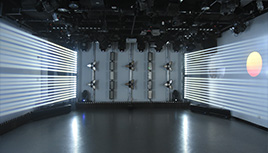How to Assess the Reliability of Stage Light Manufacturers
2025-02-28 Post By: Longmangroup
Assessing the reliability of stage light manufacturers is a critical part of the procurement process. Reliability directly impacts the quality of products, delivery timelines, after-sales service, and the overall sustainability of your operations. To make an informed decision, it's essential to consider several factors, each with its own set of criteria. Below is a comprehensive guide, including steps, considerations, potential short-term and long-term challenges, and their corresponding solutions.1. Evaluate Manufacturing Capabilities
Steps:
- Factory Visit: Whenever possible, conduct an in-person factory audit to understand the scale and processes in place. A reliable manufacturer will be transparent about their capabilities.
- Technology and Equipment: Check if the factory uses modern production technologies. For example, a LED stage light factory should have automated assembly lines for precision and speed.
- Production Capacity: Can they meet your volume requirements for large-scale events or long-term projects?
- Factory output: Annual production volume and maximum capacity per month.
- Lead times for bulk orders.
- Supply Delays: Even reliable manufacturers can face delays, especially when scaling up production for large orders.
- Solution: Negotiate reasonable lead times in advance and always have contingency suppliers.
- Upgrading Manufacturing Technology: Over time, the manufacturer’s technology may become outdated, which can affect quality and production speed.
- Solution: Build a partnership where the manufacturer commits to continuous improvements, and ensure their future-proofing efforts are aligned with your growth.
Steps:
- Research Reputation: Look at online reviews, industry testimonials, and client portfolios to evaluate the manufacturer’s track record.
- Industry Associations: Check if they are part of industry associations or adhere to standards like ISO certifications.
- References: Ask for references from other event planners, production companies, or stage designers who have worked with the manufacturer.
- Number of years in business.
- Client reviews and feedback, ideally from companies with similar needs.
- Inconsistent Reviews: New or smaller manufacturers may have inconsistent reviews, making it hard to judge reliability.
- Solution: Consider working with them on a trial basis before committing to larger orders.
- Reputation Maintenance: Over time, some manufacturers may lose focus on quality control, which could negatively impact your long-term relationship.
- Solution: Regular quality checks and feedback loops help maintain high standards, keeping manufacturers aligned with your expectations.
Steps:
- Inspection and Testing: Ensure the manufacturer has a robust quality control process. For example, LED stage lights should be rigorously tested for brightness, color accuracy, heat dissipation, and durability.
- Certification: Look for key certifications like CE, UL, RoHS, and ISO 9001 that ensure the products meet international safety and performance standards.
- Product rejection rates.
- Number of defects per shipment.
- Initial Product Defects: Even the best manufacturers can face issues with defects, especially in high-tech products like stage lighting.
- Solution: Ensure there’s a clear warranty policy in place that covers such defects.
- Inconsistent Quality Control: As the manufacturer scales, quality might fluctuate.
- Solution: Implement routine quality audits and require regular sample shipments before full orders.
Steps:
- Supplier Transparency: Understand where the manufacturer sources components for their lighting systems. Reliable manufacturers use high-quality LEDs, sturdy frames, and durable wiring.
- Material Traceability: Check if the factory has a transparent supply chain and sources from reputable suppliers.
- Percentage of materials sourced from eco-friendly suppliers.
- Manufacturing lead time based on parts procurement.
- Material Shortages: Occasionally, global supply chains can face disruptions, leading to delays or lower-quality components.
- Solution: Establish relationships with multiple suppliers and have a contingency plan for material shortages.
- Sustainability: As demand for eco-friendly products increases, the manufacturer may struggle to keep up with environmentally sustainable practices.
- Solution: Work with manufacturers who have committed to sustainability and can evolve their processes to meet green certification standards.
Steps:
- Warranty Coverage: Reliable manufacturers provide warranties for their products, ensuring you are covered in case of failure or defects.
- Response Time: How quickly do they respond to customer service requests? Ensure they have a dedicated team for troubleshooting.
- Parts Availability: A reliable manufacturer should provide access to spare parts for repairs and replacements for the long term.
- Average response time for customer support.
- Warranty terms and coverage specifics.
- Slow Customer Support: Some manufacturers may not respond promptly during the initial stages.
- Solution: Test their customer support during the negotiation stage to see how fast they are in addressing issues.
- Spare Parts Availability: Over time, older models might not have readily available replacement parts.
- Solution: Ensure long-term availability of spare parts, especially for high-end lighting models.
Steps:
- Customization Options: Some manufacturers offer customizable features for stage lighting, like adjustable mounting systems, customizable colors, or specific DMX compatibility.
- Flexible Production Runs: Look for manufacturers who can handle both small and large production runs, ensuring you can get products as per your specific event or project requirements.
- Examples of past customizations they’ve done for clients.
- Lead times for custom orders.
- Customization Delays: Custom lighting solutions can sometimes take longer to produce, delaying event preparation.
- Solution: Clearly communicate your timeline and ensure the manufacturer has the capacity to meet it.
- Long-Term Customization Support: After years of use, the manufacturer might phase out certain product lines or customization options.
- Solution: Plan long-term and make sure customization is part of the ongoing relationship.














